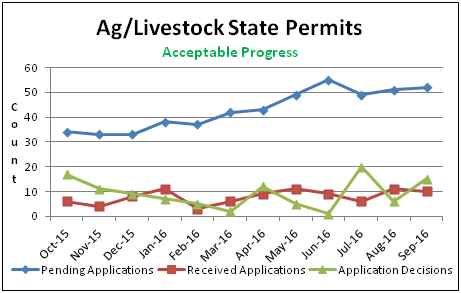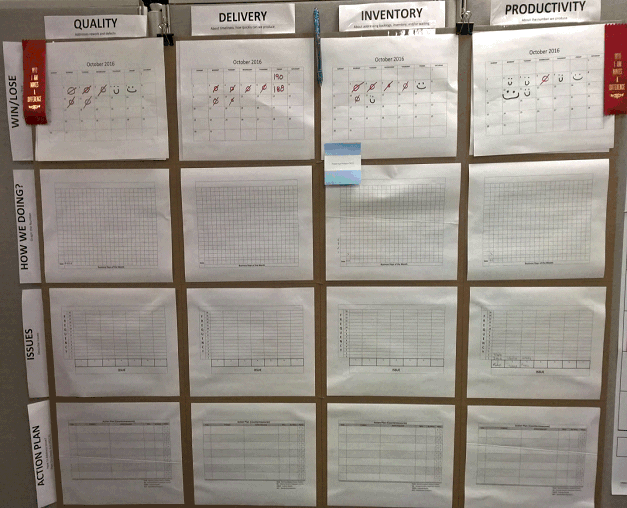September 2016 Metrics Report







Process Improvement at DEQ – QDIP Board
The Air Quality Division recently completed a Kaizen on the construction permit process. They immediately identified areas where process improvement could occur by eliminating waste. The team identified 110 process steps and 33 “hand-offs” in the current process. As a result of the Kaizen those numbers were potentially reduced to 22 and 16 respectively.

Process Improvement at DEQ – Swim Lanes
The Kaizen resulted in the establishment of “swim lanes” where applications are examined by the team in daily huddles. The huddles are brief reports on the status of the applications.
A primary objective of the Kaizen was to identify how the construction permit application process could be more efficient. The team identified a possible 60% time savings in the application process.

Emerging Issues/Risks: NDEQ Land Management Division staff have been participating with Dept. of Agriculture staff in addressing livestock mortalities and conducting related outreach events. Thanks to Dept. of Agriculture staff, NDEQ was asked to serve on a task force of the Nebraska Cattlemen Association to examine appropriate steps beef producers should take to avoid or minimize the impact of foreign animal diseases, specifically Foot and Mouth Disease (FMD). The goal is to provide guidance and public outreach to educate the producers to avoid or mitigate the impact of FMD.
Accomplishments: EPA has mandated that any public or private wastewater treatment plant required to report contaminant levels in their effluent, must submit discharge monitoring reports (DMRs) in electronic format. This will affect over 269 public municipal wastewater treatment plants and over 362 private industrial plants in Nebraska. DEQ is engaged in an aggressive outreach program that is necessary to assist the regulated community. To date eight training sessions have been held and over 200 individuals have been trained. Currently, 67 permitted facilities are submitting their DMRs electronically on the NetDMR system. When fully implemented, the NetDMR program will save both the Department and the regulated community considerable time and effort. The Department has chosen not to adopt this requirement into our regulations. However, it is a federal requirement.
Misc. Items of Note: The Omaha Lead Superfund site represents the largest residential area listed on EPA’s National Priorities List. The Omaha Lead site covers 27 square miles and includes more than 40,000 properties, the majority of which are residential. Approximately one in three of the residential properties have soil lead concentrations above the 400 ppm health-based limit. To date, over 13,000 residential yards have been remediated; contractors have excavated contaminated soil and replaced it with clean soil. As a result, EPA is proposing a second partial delisting of 294 properties, which would remove the properties from EPA’s National Priorities List. The first partial delisting in 2013 included 1,154 properties. This will lead to improved property values.